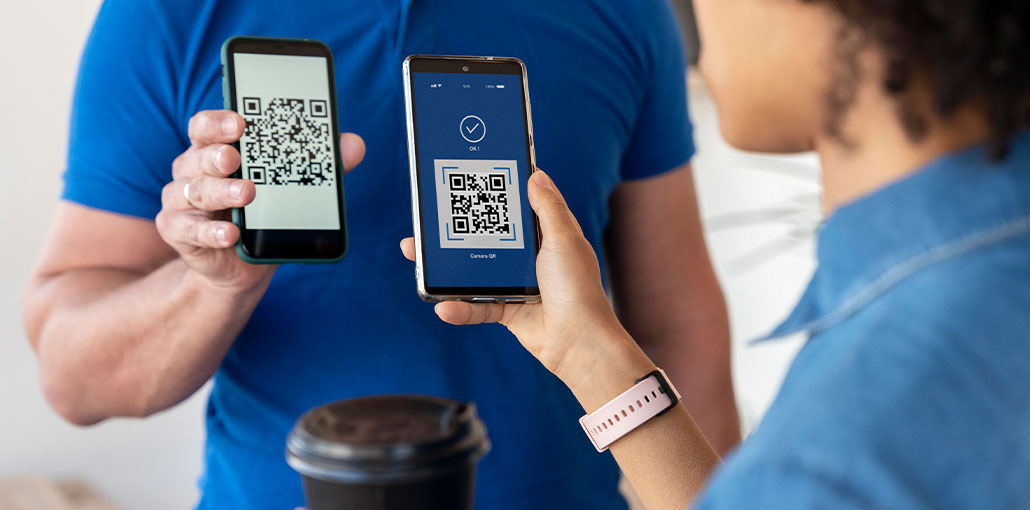As the modern business world grows more and more digital, cashless payments have gained significant popularity both abroad and in the Philippines. Customers now have many options in addition to traditional debit and credit cards, like paying for purchases completely digitally through e-wallets or mobile bank transfers.
Now that cashless payments have become a fixture in many customer experiences, up-and-coming entrepreneurs will benefit from partnering up with secure digital payment platforms like Maya Business. A cashless business solution like Maya QR, a specialized payment QR code that works with all QR Ph-compatible apps, allows customers to pay through whatever service they find most convenient without having to download different codes for each.
Embracing alternative payment methods like QR code payment systems brings numerous benefits for both businesses and customers, including greater convenience, faster transactions, and easier income and expense tracking. However, customers transitioning away from cash may also face several pain points that can deter them from trusting cashless payment systems. This article explores five of these pain points and provides possible solutions that your business can employ to address them.
1. Cybersecurity Risks
Digital technology makes it extremely convenient for customers to depend on tech-driven solutions for their everyday business transactions. But many who are used to the concreteness and straightforwardness of cash have concerns about the security of cashless payments.
Current research on the subject suggests, for instance, that problems like hacking, phishing, and other cyberattacks have been on the rise since digital payments became more popular. Hence, the fear of financial fraud, data breaches, and identity theft can discourage customers from fully embracing alternative payment methods. The same fear can also shake the confidence of business staff who are still getting used to cashless point of sale (POS) solutions.
To address these concerns, your business must ensure that it’s up-to-date on current cybersecurity best practices, and you should communicate as much to your customers. Implementing robust encryption and secure payment gateways, regularly updating company software and systems, and educating both your staff and your customers about safe online practices are crucial steps to enhance your business’s cybersecurity when rolling out new cashless solutions like a QR code POS system.
Also read: Online Privacy: What You Need to Know About Your Digital Footprint
2. Data Privacy Concerns
Modern consumers worry about how the businesses they patronize will be collecting, storing, and using their personal information when making cashless transactions. Many are concerned that this data may be sold to other businesses or even bad actors for profit, placing them at risk for identity theft and financial fraud. Others are concerned about businesses tracking or surveilling their online activities.
To alleviate these concerns and build trust and credibility for your business, it’s in your best interest to communicate your privacy policies clearly so that your customers know exactly how their personal information will be used during transactions. Another way to build consumer trust is to implement strong data protection measures around your transactions. Anonymize customer information, obtain consent for data usage and provide opt-out options to convince your customers that their data is always safe in your hands.
3. Exclusion of Unbanked or Underbanked Customers
Certain customers depend exclusively on cash payments to purchase the goods and services they need. Unbanked and underbanked individuals, such as members of urban poor communities and residents of far-flung rural areas, may not have the resources or opportunities to enroll in traditional banking services. Without access to deposit accounts, credit or debit cards, and the like, it’s often difficult—if not impossible—for these customers to go the cashless route.
Fortunately, SMEs and startups can now explore more creative solutions for assisting their traditionally unbanked or underbanked customers. For example, they can consider partnerships with mobile payment providers or fintech companies. These organizations offer payment solutions such as prepaid cards and top-capable mobile wallets which can serve as viable cashless options for consumers without traditional banking access. A company like yours can also establish partnerships with community organizations and explore initiatives to promote financial inclusion and introduce community members to new technologies.
4. Usability Challenges for Non-Tech Savvy Customers
Many customers, particularly those who are older or less accustomed to using digital technology, may find cashless payments difficult or confusing to work with. There’s a chance that they’ll struggle with complicated interfaces, excessively lengthy or complex processes, and alienating technical jargon. If businesses want customers from all technological backgrounds to utilize cashless transactions, they’ll thus need to ensure that the payment process is as smooth, simple, and easy to grasp as possible.
Less tech-savvy customers will benefit from streamlined user interfaces (UIs) and simplified payment processes, each with a relatively small number of steps and clear instructions. To achieve these, your company should invest in intuitive design and user experience testing to get a comprehensive perspective on how real people feel about your business solutions and technologies. Providing comprehensive customer support, such as helplines or online tutorials for completing transactions, will also prove immensely helpful for customers still learning their way around new payment methods.
Also read: How to Handle Late or Missed Payments From Clients
5. Technological Problems
Payment failures, system glitches, or network issues can frustrate customers and undermine their confidence in businesses employing cashless payments. And while there’s no way to completely eliminate technological challenges, testing and updating your systems regularly can help keep them running smoothly.
Should any technical issues arrive with your company’s cashless payment systems, make up for the inconvenience by meeting your customers with prompt and attentive customer support. On the back end, it will also benefit your business to collaborate with technology providers or payment processors that have a strong track record of reliability.
Though it may take time and a significant investment of resources, it’s in a business’s best interest to address the difficulties and fears that customers associate with cashless payments. The convenience and efficiency gains that both companies and their consumers will achieve by going cashless will truly be worth it.










Leave a comment